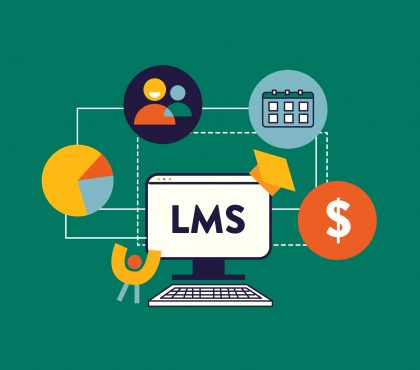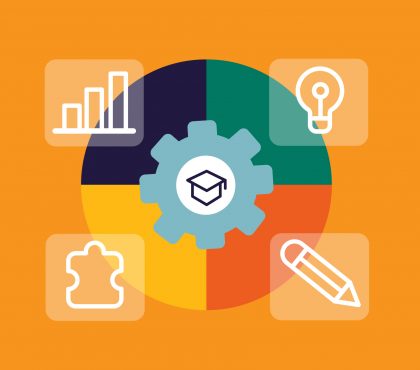Think about whenever your L&D team has to work beyond capability. Members are under pressure and overloaded. It slows down all the processes, resulting in constantly missed deadlines and low-quality outcomes. These nightmares are mostly due to your poor L&D capability planning and management. Well, this article is here to help you properly develop and enhance the efficiency of capability planning. Let’s get started from the most basic information.
What is L&D capability planning?
L&D capability planning is the process to assess the team’s supply, including skillsets and availability of members, against training demand. As a result, you might understand how much work your team can undertake over a given time. That’s why sometimes it’s referred to as demand planning or resource forecasting.
In a capacity planning exercise, you will need to analyze three following factors of the L&D team’s available resources:
- Hours of team availability
- Budget for these hours
- Specific skillsets at the team level
Continue with the same analysis in the training demands on your team. Make a comparison and you will see the gap between what capability you have and what you need. This helps you to make decisions on whether to hire extra resources or say no to a particular training project.
Preparation Checklist to Power your Digital Transformation
Wondering if you miss anything in your preparation to digitize your training? This is just what you need.
Read more:
How does L&D capability planning benefit your training efficiency?
You might assume that if you know all about your team’s capacity, L&D capability planning seems to be unnecessary. However, other benefits below of proper capacity planning can make you reconsider its importance:
Ensure availability
With concrete capacity figures of the team, you can clarify all stakeholders’ expectations to prevent your team from overworking. Before deciding to commit time to a training project, make sure that your team can deliver it on promises. Otherwise, it’s reasonable to acquire extra resources to fulfill the demand.
Save costs
The better you understand the team’s capability, the more accurately you plan the number of projects you can take on. This prevents you from spending on expensive vendors or unexpected hiring needs.
Improve skill management
New learning experiences based on technology require more expected skillset of a training team. That’s why skillsets management is an important part of L&D capability management. It allows you to early identify the lack of skill set and have a plan for it accordingly.
Find more about how we customize Learning and development tasks with animation:
A 5-points checklist for L&D capability planning and management
Here are 5 actions you should do to keep on track with your L&D capability management
- Define existing resource
- Monitor your team’s capability
- Create a plan for contingencies
- Solve long-term capacity shortages
- Align capability planning with resource planning
#1 Define existing resource
Forecast upcoming training demands
First, create an overview report including all requested training programs and planned tasks by time and skills requirements. You should update these data annually or quarterly, depending on how your training activities work.
Note that you should include even the smallest tasks. For example, it can cover:
- Planning or introducing a brand-new training project
- Transforming existing courses into new formats and platforms
- Revising old or outdated content
- or daily administrative tasks
Define capability and demands by FTE hours
Doing L&D capability planning and management at the FTE hour level gives you an overview picture as accurately as possible. You can plan precisely the required number of freelancers, as well as the hourly rate, to meet the upcoming demand.
Prepare skills inventory
Another thing that needs to be defined is the required skills for each member to complete projects. A properly compiled skill inventory helps you divide resources more efficiently across different projects. A skills inventory includes certifications, qualifications, secondary skillsets, experiences, and tool familiarity level.
#2 Monitor your team’s ongoing capacity
Unexpected tasks or projects can pop up anytime even with the best training team management. Besides, there are also unforeseen resource cuts such as budget cuts, layoffs, or experienced member resigning. Thus, it’s necessary to continuously monitor your team’s ongoing capacity to always make the most out of it.
Do not forget to track project timelines in detail to make sure that the resource allocation aligns with your capability. Take the minimum capability available into account, so you know when needs to cut down demand or add extra resources.
Recommend reading:
#3 Create a plan for contingencies
What if the training organization is more complicated than initial planning? What if the demand rises when your team is low on resources? Difficulties or urgent requests can happen unexpectedly, thus, you should have a contingency plan in advance.
The contingency plans vary depending on specific organizations. But there are some popular actions you can expect, for example:
- Detailed prioritization plan for the project
- Temporary hires of high-demanded positions
- Increasing budget for emergency freelancers
- Involving SMEs in more training creations
#4 Solve long-term capacity shortages
To address the shortages of capability, both short-term and long-term, you can:
Implement new tools or software
A proper L&D capability planning will show you the gap between demand and capability, and how technology helps to bridge it. Undoubtedly, you can use automation to streamline many processes in training program development. So consider using new software or tools for learning and development to save your time and expand your capability.
Invest in training
You can provide training to junior staff who show interest in developing required skills. This is a great way to build up your sustainable team in the long term.
Hire long-term staffs
Hiring more resources is one of the main cures for availability shortages if your budget can stretch to extra members. Detailed L&D capability management will be helpful to justify that demand.
Recommended reading:
#5 Align L&D capability planning with resource planning
When entirely understanding your team’s capability, you can easily allocate resources efficiently across training projects. You can also properly assess the need for extra resources or skills in the future. To align your team’s capacity with resource planning, you need to:
- Define the demands of individual training programs to map available hours and skillsets for each project.
- Devise a suitable schedule that ensures the availability of the required resources.
To sum up
It’s always crucial to have comprehensive L&D capability planning and management before your team commits to a new project. Make it as detailed as possible so that you can ensure to launch a training program on time, on budget, and effectively.
Read more:




